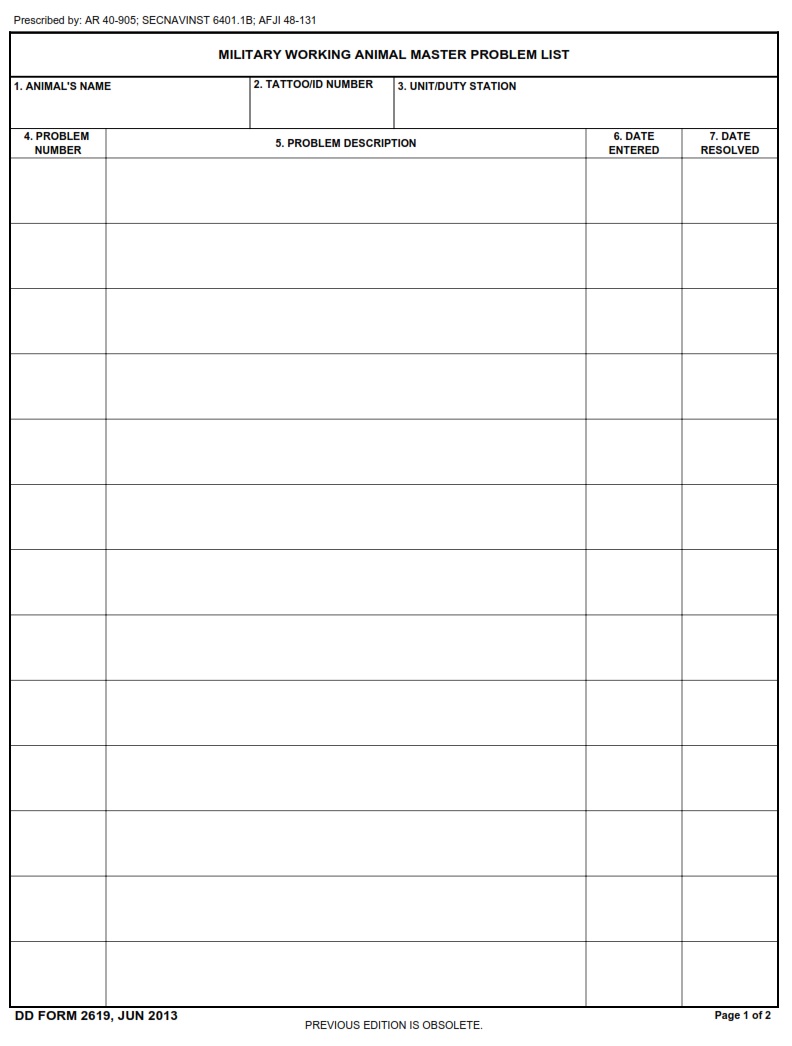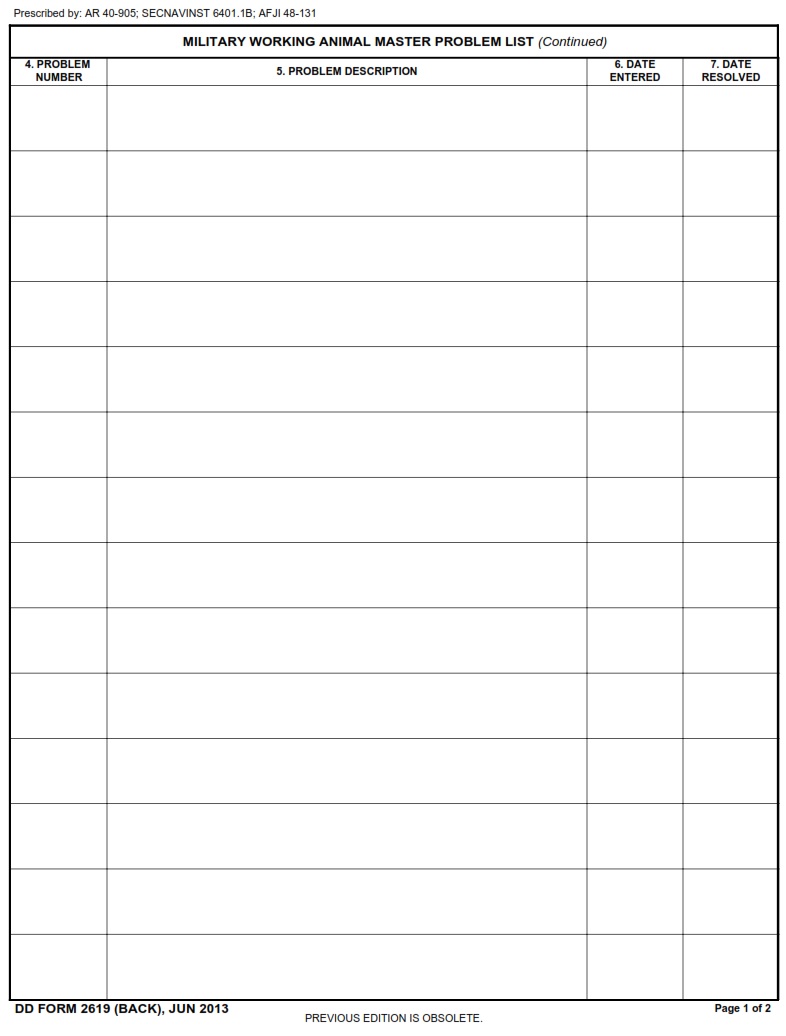Table of Contents
FREE-ONLINE-FORMS.COM – DD Form 2619 – Military Working Dog Master Problem List – Military working dogs have long been an integral part of the armed forces, serving alongside their human counterparts with unwavering loyalty and exceptional skills. These four-legged heroes play a crucial role in various military operations, from sniffing out explosives to tracking down enemies. However, just like their human handlers, these canine warriors may encounter challenges that affect their performance on duty. Enter the DD Form 2619 – the Military Working Dog Master Problem List, a document designed to address and track any issues or concerns faced by these brave working dogs.
The DD Form 2619 serves as a vital tool in ensuring the well-being and effectiveness of military working dogs by documenting critical information related to their health, behavior, training progress, and any obstacles they may encounter while carrying out their duties. From medical conditions to behavioral issues, this form provides a comprehensive overview of each dog’s status and serves as a roadmap for addressing and resolving any problems that may arise. In this article, we delve into the importance of DD Form 2619 in supporting our furry soldiers and how it plays a pivotal role in maintaining peak performance levels for these indispensable members of our armed forces.
Download DD Form 2619 – Military Working Dog Master Problem List
| Form Number | DD Form 2619 |
| Form Title | Military Working Dog Master Problem List |
| Edition Date | 6/1/2013 |
| File Size | 32 KB |
What is a DD Form 2619?
The DD Form 2619, also known as the Military Working Dog Master Problem List, is a critical document used in the management and care of military working dogs (MWD). This form serves as a comprehensive record of any health issues, training needs, behavior problems, or other important information related to an individual MWD. By keeping detailed entries on this form, handlers and veterinarians can track the well-being and performance of each dog over time.
One key aspect of DD Form 2619 is its ability to facilitate communication between different parties involved in the care of military working dogs. Handlers can use this form to communicate concerns or observations about their MWD’s behavior or health with veterinary staff, ensuring that any issues are addressed promptly. Additionally, this form can be a valuable tool for identifying trends or patterns in a dog’s overall health and performance, allowing for targeted interventions to optimize the well-being and effectiveness of these essential working animals.
Where Can I Find a DD Form 2619?
If you’re searching for a DD Form 2619, also known as the Military Working Dog Master Problem List, you can find it on the official website of the United States Department of Defense. The form is typically used by military personnel involved in working dog programs to document any health or behavioral issues experienced by the dogs. In addition to the official website, some military bases and veterinary clinics may also have copies of this form available for reference.
It’s important to note that access to this form may be restricted due to its sensitive nature and use within military operations. However, individuals with proper authorization can request and obtain a copy through appropriate channels. By understanding where to find the DD Form 2619, military personnel can effectively track and address any problems faced by their working dogs, ensuring their health and well-being are properly managed.
DD Form 2619 – Military Working Dog Master Problem List
The DD Form 2619, also known as the Military Working Dog Master Problem List, serves as a crucial tool in tracking and managing the health issues of military working dogs (MWDs). This comprehensive document details specific problems encountered by each MWD, allowing for efficient monitoring and treatment. From injuries to illnesses, every aspect of a dog’s health can be recorded on this form to ensure nothing is overlooked.
One key advantage of DD Form 2619 is its ability to provide valuable data for research and analysis in the field of veterinary medicine. By aggregating information from multiple MWDs over time, trends can be identified, leading to improved understanding and management of common health issues among working dogs. Additionally, this form plays a pivotal role in facilitating communication between veterinarians and handlers, ensuring that all necessary information is documented and shared for the optimal care of these dedicated canine soldiers.

